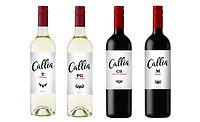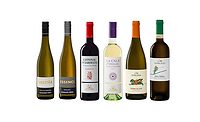“It can be intimidating to walk down that wine aisle,” says Danny Brager, vice president of beverage alcohol for Nielsen, New York. “There are so many items, sometimes it’s difficult to navigate down the aisle because you just see this sea of bottles.”
The wealth of options within the wine category — from different varietals to different labels to different places of origin — can prove daunting for many wine buyers, experts note.
“A lot of times when consumers were not [buying] wine before, it’s because they were overwhelmed,” says Claire Moulin, lead analyst for Chicago-based Euromonitor International. “They said, ‘Oh, I have to have all this knowledge about wine and how to drink it.’”
The typical wine consumer is well-educated, with many drinkers boasting undergraduate and graduate degrees, says Agata Kaczanowska, beverage industry analyst for Santa Monica, Calif.-based IBISWorld. However, many of them also fall into the relatively young millennial age group that lacks years of wine drinking experience, experts note.
“It’s very much about simplifying the offer,” Euromonitor’s Moulin explains. “The thing about the new consumer switching to wine consumption is that they don’t know so much about the different varietals, so they’re not going to go for a specific varietal; they’re more going to look at how the bottle looks [and] what kind of taste is coming with it.” Wine labels that manage to connect with consumers through their easily identifiable image, charity work or simple product offerings better attract sales, adds Jared Koerten, U.S. research analyst at Euromonitor.
For example, Modesto, Calif.-based E. & J. Gallo Winery's Barefoot brand, which is the top-selling table wine brand in the United States according to data from Chicago-based SymphonyIRI Group, has created a simple and easily identifiable label featuring a solitary footprint as its logo, Euromonitor’s Koerten notes. The label color changes based on varietal, and specialty stickers on each bottle call attention to the awards each varietal has won, showing consumers that this is a brand that others enjoy, he says. Plus, the Modesto, Calif.-based brand’s involvement in charitable causes, such as its Walk for a Cause initiative supporting local causes and its Beach Rescue Project to clean up beaches to make it safer for beachgoers to walk barefoot in the sand, gives consumers another reason to connect with the brand, he adds.
Skinnygirl wines, products of Deerfield, Ill.-based Beam Inc., also have resonated with consumers because they boil the wine selection process down to three basic choices: California Red Blend, California White Blend or California Rosé blend, Euromonitor’s Moulin says.
For the wine shopper, it might take a little bit more than good branding to identify the perfect wine, Nielsen’s Brager says. “Distinguishing yourself is sort of a combination of what the supplier can do to make the wine stand out and also how they’re going to partner with retailers or what retailers are going to do to make it easier for the consumer to shop the category,” he says. Retailers need to think about how to best arrange the many wine options in a store and include signage to help shoppers find what they want, he notes. “[The wine] needs to find the consumer, not the other way around,” he adds. Brager suggests including a “What’s New” section in the wine department to help shoppers identify some of the newest offerings in the category and encourage trial.
A glass for prosperity
After its 18th consecutive year of growth in 2012, according to data from Chicago-based Mintel, the wine category has shown that it can weather the rough economy and innovate to find new opportunities for growth, experts say.
In the midst of dwindling consumer confidence, many shoppers still splurged on affordable luxuries like bottles of wine to help them relax or celebrate, IBISWorld’s Kaczanowska says. However, many consumers tended to select lower-priced wine during this time, and many wineries responded to this consumer need by lowering prices or offering promotional deals, she adds.
Mintel predicted in its October 2012 report on wine that the U.S. market would reach $40 billion in sales in 2012, which would be a 5.8 percent increase from 2011. Domestic wine sales outpaced the category in 2011, growing 5.5 percent and accounting for three-quarters of total volume, according to Chicago-based Technomic Inc.’s report, “WineTAB: 2012 Trends in Adult Beverage Report.” Imports also grew by approximately 2 percent during the same time period, it states.
Approximately 90 percent of U.S. wines are produced in California, followed by Washington, which produces about 4 percent, and New York, which produces about 3 percent, IBISWorld’s Kaczanowska says. Oregon and Texas also contribute a significant share of the remaining domestic wine market, Euromonitor’s Koerten adds. In addition, there has been a recent trend in consumer desire for locally sourced wines, similar to the craft beer movement, he says.
Overall, table wines continue to dominate the U.S. wine market, making up 92 percent of total wine volume, Technomic reports. White wines make up approximately 41 percent of wine production, while red wines make up 36 percent, and blush wines make up 10 percent, IBISWorld reports. Of these, Chardonnay is the top-selling wine varietal in the United States, followed by Cabernet Sauvignon, Merlot, Pinot Grigio and Pinot Noir, the market research firm reports.
Some sweeter varietals are increasingly capturing consumer interest, Euromonitor’s Koerten says. “Some of the traditional varietals of wine are more of an acquired taste; they’re not easy to jump in and start enjoying right away, whereas Moscato and Riesling and other sweet varietals make it easy to start enjoying wine because it’s very, very sweet and very easy to enjoy,” he explains. Euromonitor’s Moulin adds that the Moscato varietal has been one of the biggest wine success stories in recent years as it achieves between 30 and 50 percent growth on its own plus additional growth as a varietal in blends. It also has been very popular among millennial and Hispanic consumers who prefer the sweet taste, she adds. Moscato currently is the sixth best-selling wine in the United States, Nielsen’s Brager reports.
Compared with the distinction among wine varietals, private label wines are harder to identify among other labels because many lines don’t carry a store’s name, Nielsen’s Brager says.
“There’s not as much brand loyalty in wine because of the experimental nature of it and the adventurous consumer,” Brager says. In this way, private label wines can be a win for stores if they market their private label product, because the adventurous wine consumer will be interested in giving it a try, he says.
On the innovation front, varietal blends also are becoming more popular and growing three times faster than the general wine market, Euromonitor’s Koerten says. Trailblazed by the Ménage à Trois wine label a few years ago, this varietal now is growing in the 20-percent range every year as more labels experiment with blends, Nielsen’s Brager adds. Some of this popularity might be due to consumer shopping habits of choosing wines for taste, pairings or packaging rather than by a specific varietal, Euromonitor’s Moulin says.
The last year also has been an exciting time for new innovations in wine packaging, experts note. Cantina di Soave USA, Brooklyn, N.Y., brought wine couture to the market with the release of its Volére Pinot Grigio, Merlot-Pinot Noir and Rosé wines in fashionable boxes designed to look like purses. This packaging development has helped elevate the boxed wine format from an economical option to a high-quality product, Euromonitor’s Moulin notes. Plus, the stylish packaging is portable and keeps the wine fresh longer than a bottle does, she adds. Flexible, stand-up pouches also have made their way into the wine market.
In February, Atlanta-based Bonfire Wines introduced its line of wines in 1.5-liter, eco-friendly pouches with spouts for increased portability and extended freshness, the company says.
Demographic impact
Many innovations and trends in the wine market are driven by the millennial consumer demographic, experts note. Millennials started drinking wine at an earlier age than previous generations, are not as heavy on beer consumption compared with other age cohorts, and have found more occasions during the week to drink wine — sometimes consuming several glasses per sitting, Euromonitor’s Koerten says. However, these adventurous consumers tend not to show brand loyalty and instead will choose a particular bottle because of its taste, price point, or packaging and label, mixing and matching different brands and varietals, he adds.
With the entire 77.7 million member age cohort reaching legal drinking age by 2015, wine labels should begin forming relationships with those members currently of legal drinking age and positioning themselves as new or interesting to this demographic in order to ensure continued growth, Mintel advises.
Beyond the millennial generation, the wine industry continues to remain relevant to the baby boomer generation, Mintel notes. However, the demographic challenge for the U.S. wine industry is the age group in between the baby boomers and the millennials, it says. “Not only are [Generation Xers] the most likely to not drink wine at all, their consumption levels are consistently lower than that of other age groups,” Mintel said in its October 2012 report. To better engage with these consumers, wine labels should highlight the health benefits of their wines to connect to the healthy lifestyle goals of members of this demographic group, Mintel says. Plus, wine labels can boost sales across all demographic groups by further educating consumers about their products to make choosing and buying a bottle of wine a more comfortable experience, it says.
Wine industry presents a new way to shop
Due to legal regulations, where consumers shop for wine tends to vary by location, explains Danny Brager, vice president of beverage alcohol for market research firm Nielsen, New York.
Overall, 68.3 percent of dollar sales for wine are spent at wine and liquor stores, supercenters, club stores, natural food stores and convenience stores, Mintel stated in its October 2012 report on wine. However, supermarkets and drug stores also are gaining share in the wine market thanks to the convenience and cost savings they offer, it states.
Nielsen’s Brager attributes this growth for supermarkets and drug stores to more locations offering alcohol choices. “Stores are finding that alcoholic beverages are a good category to have to offer the consumer, because [alcohol sales] continued to grow during the recession,” he says.
Shopping for wine in a traditional store with rows and rows of bottles can be a bit intimidating for a consumer, though, Brager notes. With an array of different origins, varietals, blends and labels, it can be hard to know where to start. Catering to consumers who might want or need more time and guidance to peruse wine options, some merchants have turned to the Internet to create a new wine market.
In November 2012, Amazon.com Inc., Seattle, launched Amazon Wine for consumers in California, Connecticut, Florida, Idaho, Illinois, Iowa, Nebraska, Nevada, North Carolina, Oregon, Washington, Wyoming and the District of Columbia. Customers can peruse wine options on the website, select up to six bottles for $9.99 each and have them shipped directly to their homes. Plus, the new retail format gives wineries the opportunity to reach a new audience.
“People love to explore wine, but it is rare to have detailed information and opinions located all in one place,” said Tom Hedges of Hedges Family Estate, Red Mountain, Wash., in a statement. “What Amazon has done with their new wine store is take the experience of hundreds of tasting rooms and put them online. We could not be more excited by the possibilities of growing our business and reaching new customers.”
These new online shopping opportunities could change the way the wine industry reaches consumers, says Jared Koerten, U.S. research analyst at Euromonitor International, Chicago. “We’ve seen how Amazon has been able to totally shake up other markets, like consumer electronics, and it just totally revolutionized the way consumers shop,” he says. If Amazon is successful in its wine-selling endeavors, it could pose an obstacle for other retail channels, he adds.
According to London-based Wine Intelligence’s 2012 direct-to-consumer report, “Who Uses Direct-to-Consumer Channels in the USA and Why,” online, mail-order and tasting room wine sales accounted for 2 percent of U.S. wine sales in 2011. However, as the online-oriented millennial generation comes of age and increases wine consumption during the next 10 years, Wine Intelligence expects the direct-to-consumer channel to grow, as legal regulations allow, thanks to the convenience and availability of products offered in this channel, it says.








